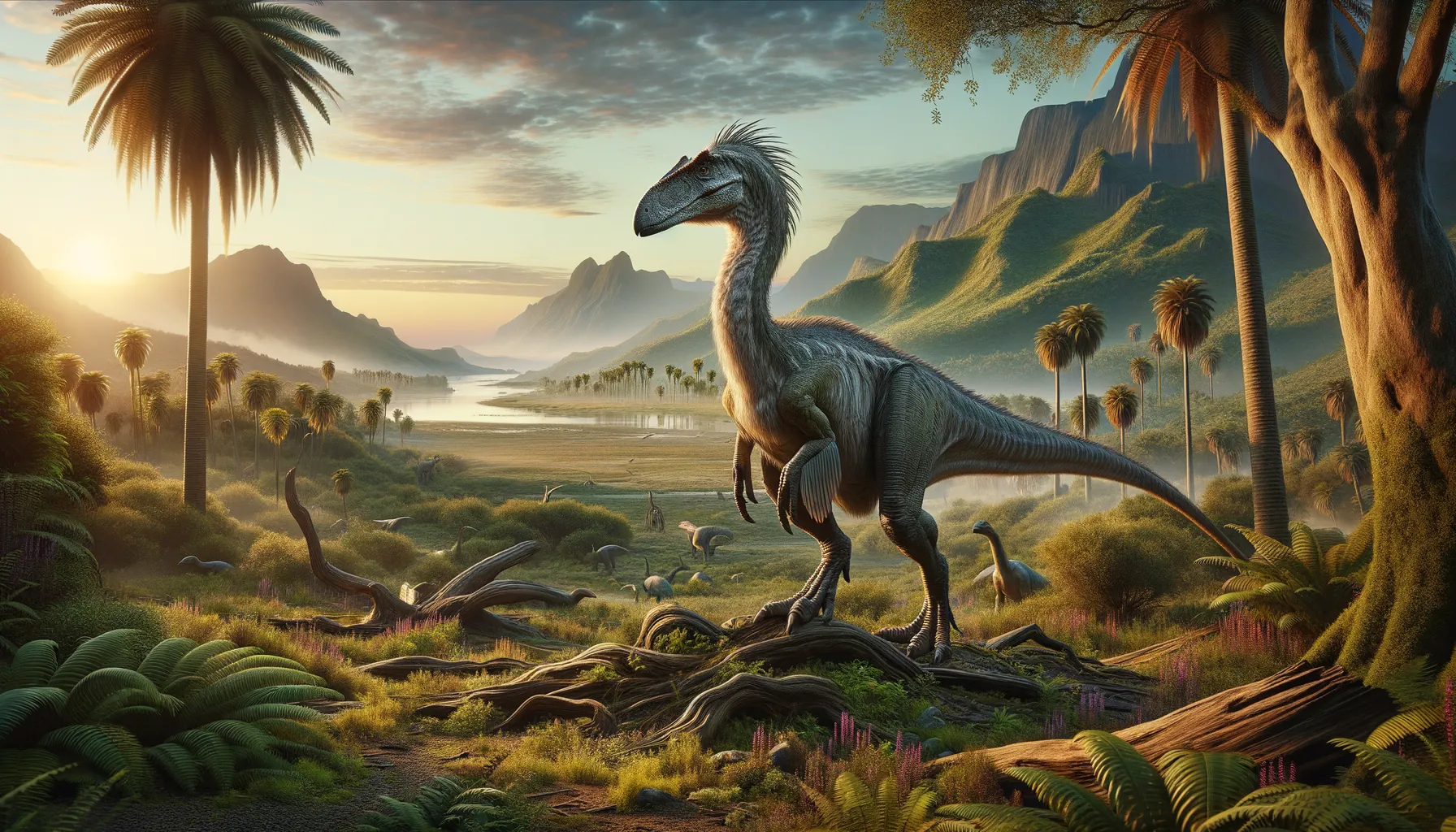
Rinchenia
Graceful survivor of the Cretaceous world.
Period
triassic
Length
Its length was approximately 6 feet.
Height
Rinchenia stood about 4 to 5 feet tall.
Weight
Rinchenia weighed around 33 to 45 kilograms.
Rinchenia was a bird-like dinosaur that lived during the Late Cretaceous period. Characterized by its distinctive elongated limbs and likely feathered body, it was an agile omnivore. This dinosaur's sharp claws and beak adapted well for a mixed diet, enabling survival in diverse habitats. Discovered in Mongolia, Rinchenia provides insight into the evolutionary link between non-avian dinosaurs and modern birds. Its fossils highlight it as a dynamic creature in a rich prehistoric ecosystem.
Diet
Rinchenia was an omnivore, likely feeding on small animals and various plant materials. This varied diet gave it a survival advantage in changing environments.
Hunting
Its hunting behavior likely included foraging for insects and small vertebrates. Agile movements and keen senses helped it capture prey efficiently.
Environmental challenges
Rinchenia faced challenges such as climate fluctuations and competition for resources. Predation from larger dinosaurs was a constant threat. It also had to adapt to periodic changes in food availability. These challenges required flexibility in diet and behavior, favoring its omnivorous nature.
Speed
Rinchenia was relatively swift due to its lightweight build.
Lifespan
Rinchenia's lifespan likely spanned several decades.
First discovery
Rinchenia was first discovered in Mongolia in the 1970s.
Fun Facts
- Rinchenia was a small, bird-like dinosaur that lived about 70 million years ago during the late Cretaceous period.
- It was named after Rinchen Barsbold, a famous Mongolian paleontologist known for his work on theropod dinosaurs.
- Rinchenia had a lightweight, hollow-boned structure similar to modern birds, which may have helped it move quickly.
- The dinosaur had a distinctive crest on its head that might have been used for display during mating rituals or to communicate with others of its species.
- Rinchenia's beak-like mouth suggests it may have been an omnivore, eating both plants and small animals.
- Fossils of Rinchenia have been found in Mongolia, providing insights into the diverse dinosaur communities of ancient Asia.
- Despite its bird-like appearance, Rinchenia was unable to fly, but it likely relied on its speed and agility to evade predators.
Growth and Development
Rinchenia likely experienced rapid growth during the juvenile stage to reach maturity quickly. Its development was characterized by the gradual strengthening of limbs and refining of motor skills. These adaptations helped it become a proficient forager and mover. Growth patterns also supported its survival in the competitive Cretaceous ecosystem.
Habitat
Rinchenia inhabited a variety of environments, from dense forests to open plains. It likely preferred areas with abundant food sources, such as shrubs and small animals. The ability to adapt to different habitats made it a versatile species. Seasonal migrations may have occurred in response to environmental changes.
Interaction with other species
Rinchenia likely interacted with various species, including potential predators and competitors. It may have coexisted with other omnivores, sharing resources when abundant. Defensive behaviors against predators included using speed and agility to escape. These interactions shaped its role in the ecosystem.
Natural lifespan
Rinchenia's natural lifespan might have reached up to 20 years.
Reproduction
Rinchenia was likely oviparous, laying eggs in nests on the ground. Parental care might have included guarding the nest and possibly feeding hatchlings. Breeding strategies were adapted to ensure the survival of their young. Social structures during breeding seasons might have supported group nesting.
Social behaviour
Rinchenia could have lived in small groups or pairs, aiding in protection and foraging. Social interactions may have included complex vocalizations or displays using feathers. Group dynamics helped in resource sharing, especially when food was plentiful. These behaviors facilitated adaptation to environmental challenges.
Fossil locations
Rinchenia fossils are primarily found in the Late Cretaceous sediments of Mongolia. These findings provide critical insights into its lifestyle and environment. The well-preserved nature of such fossils has allowed detailed studies. Most notable discoveries occurred in regions like the Djadokhta Formation.
